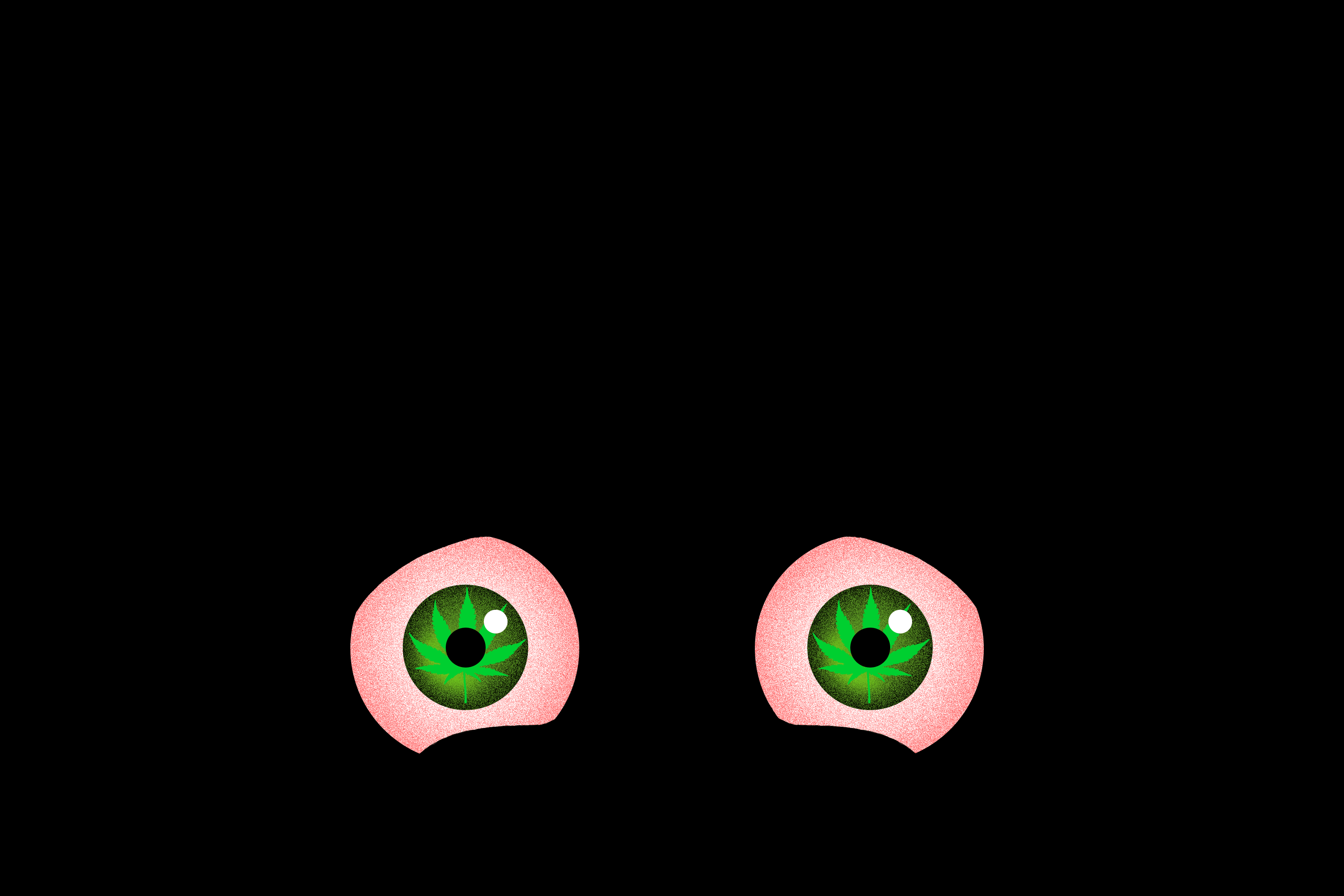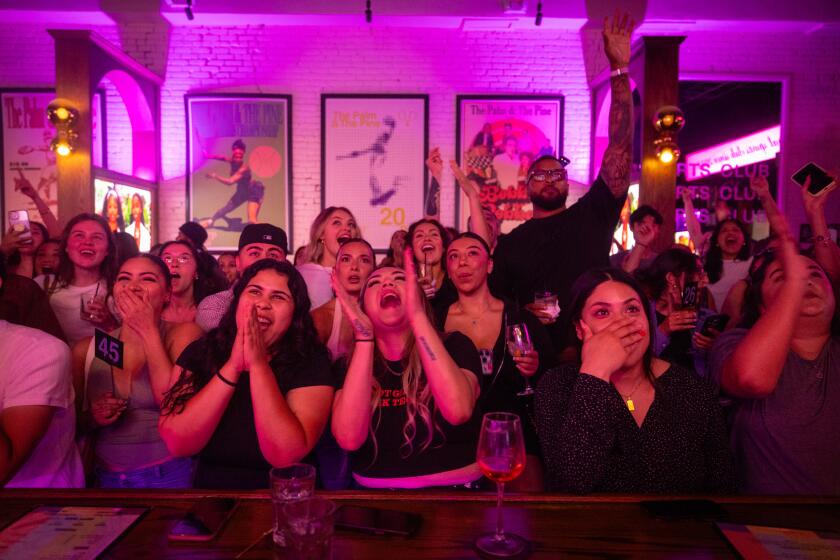
How to get scary-close to 12 iconic L.A. film and TV horror homes
- Share via
One of the things that makes the approaching spooky season so special in Southern California (besides the fact that you can celebrate Halloween without the fear of frostbite) is that so many of the set pieces that haunt our collective imagination — on screens big and small — are close at (severed) hand.
So if you’re looking for a novel way to get in the Halloween mood, kick the candy and costumes to the curb. Buckle up and treat yourself to a driving tour of some of the Southland’s spookiest film and TV houses (and one terrifying hedge).
Planning your weekend?
Stay up to date on the best things to do, see and eat in L.A.
Two things to remember before embarking on a driving tour of the damned: First, with very few exceptions, the places below are on private property. Therefore, be respectful and don’t trespass. Snap your selfies from the public right of way — or you’ll make yourself someone else’s nightmare.
Second, while scariness is, to a certain extent, subjective (the movie “Poltergeist,” algebra and pimento loaf frighten me, for example), I’ve tried to give each place I visited an in-the-flesh spookiness factor; a barometer of how just frightening (or not) these scary places seem offscreen. Whether or not you ultimately agree, consider yourself forewarned.
We’ve traveled around Los Angeles to find the scariest places to visit when you’re high, whether for Halloween or a day of exploring the city.
"American Horror Story"
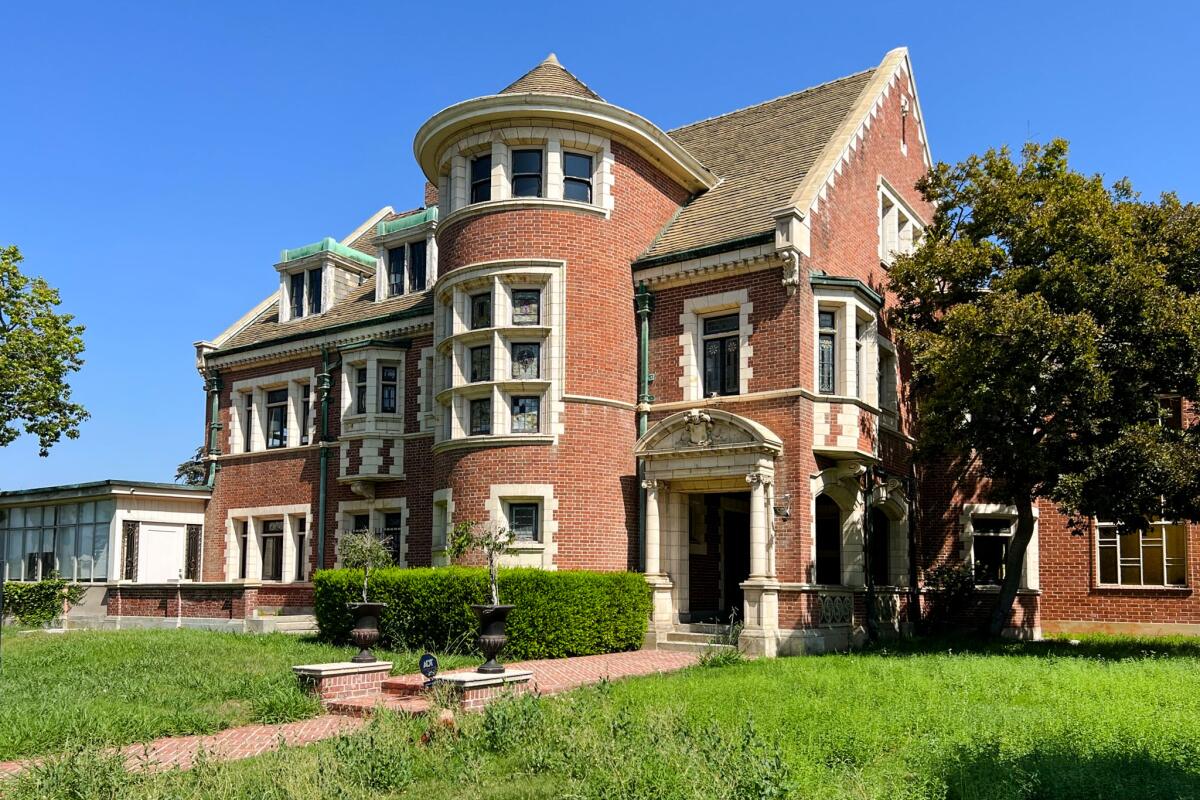
That first season later came to be known as “Murder House” and its namesake would live on in the Ryan Murphy and Brad Falchuk horror universe, including Season 8 of AHS (“Apocalypse”) and several episodes of the spinoff series “American Horror Stories.” (Fun — non-spooky — fact: In 1999, the Rosenheim Mansion was added to L.A.’s list of Historical-Cultural Monuments.)
Spookiness factor: There’s something about the heavy red brickwork, the Tiffany stained-glass windows and the fact that it served as a convent for Catholic nuns for half a century that makes this one of the spookiest places on the list. (And the less thought about what transpired in the basement — onscreen or off — the better.)
"Buffy the Vampire Slayer"
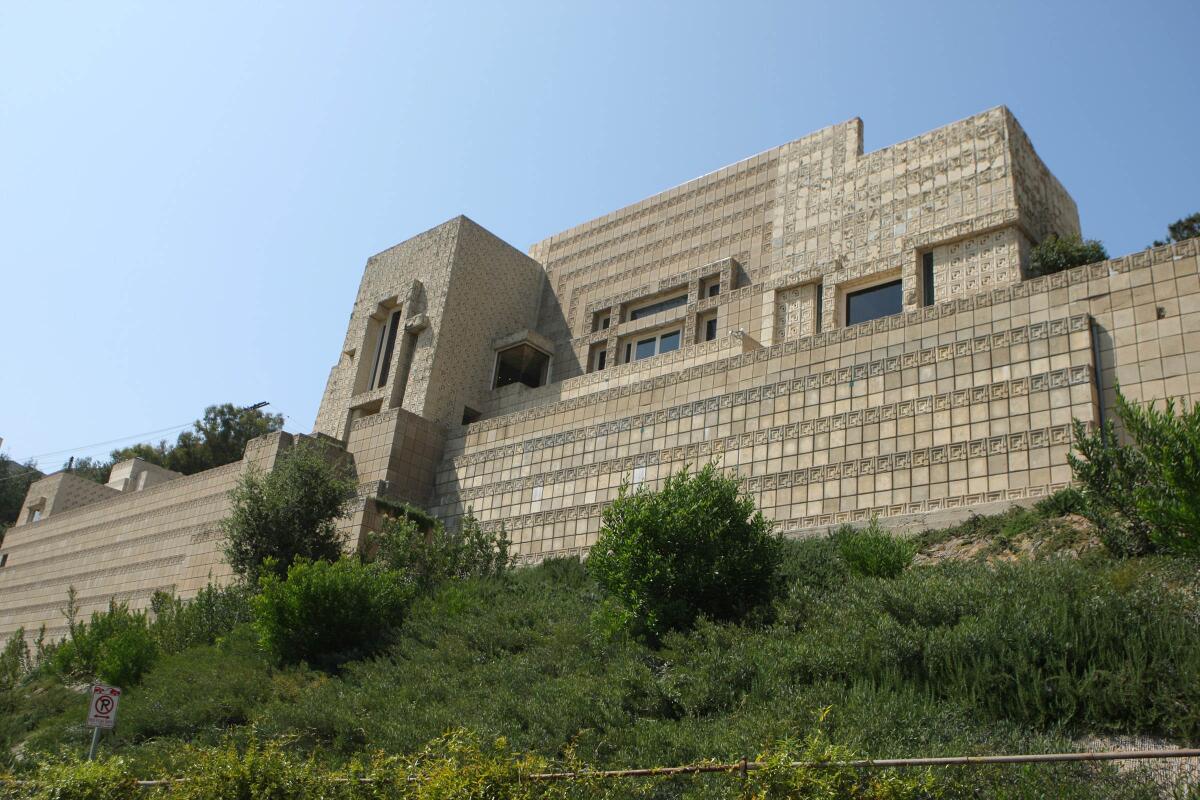
Fans of the “Buffy the Vampire Slayer” TV series will recognize its distinctive exterior as Angel’s abandoned Crawford Street mansion for starters, and movie buffs might find the façade familiar from “The House on Haunted Hill” (1959) or “Predator 2” (1990). The Ennis House also has had cameos in a slew of non-scary movies, including “Rush Hour,” “Blade Runner” and “Karate Kid Part III.”
Spookiness factor: Imposing, sure, but hardly spooky — unless you’re footing the bills for upkeep and repairs.
"Charmed"
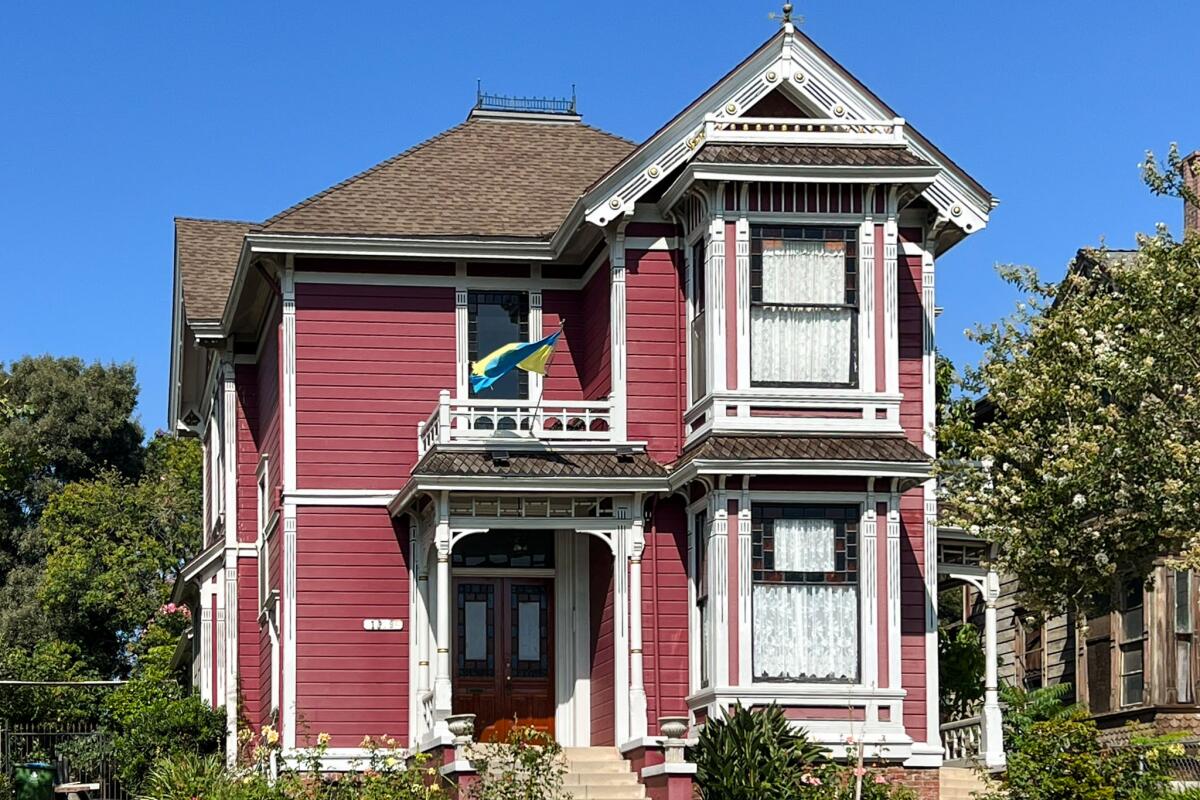
And despite the last original episode airing almost three decades ago, the home of the fictional Halliwell siblings remains a serious draw for fans of the (oc)cult favorite. On the late-summer day I visited, there were a dozen tourists — 10 from Italy and a couple from France — posted up out front snapping photos.
Spookiness factor: Nonexistent — unless you’re skittish around Victorian architecture.
"Halloween" (Michael Myers' boyhood home)
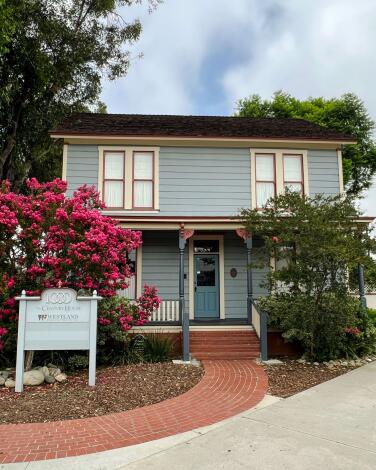
It’s still worth seeking out, though, first because this home turned office building (a historical landmark that may be the oldest wood-frame building in South Pasadena) is where Meyers’ four-decade, 11-movie (we’re not going to count the totally-Meyers-free “Halloween III: Season of the Witch”) murder spree got underway.
The second reason is the building directly behind that building at 810 Meridian Ave. That’s where you’ll find SugarMynt Gallery (slogan: “Where every day is Halloween”), an art gallery that’s made a literal cottage industry out of Haddonfield’s best-known bad guy. It features props, photo ops and purchasable “Halloween”-themed art. The gallery, which costs $20 to enter, also stages an annual fall art exhibition called “Welcome to Haddonfield” (the current one opened Sept. 2 and runs through ... Halloween).
Spookiness factor: Myers’ home is about as scary as the financial services business it currently houses — unless you count the Meyers mannequin watching you from the foliage between that house and SugarMynt next door.
"Halloween" (Laurie Strode's house)
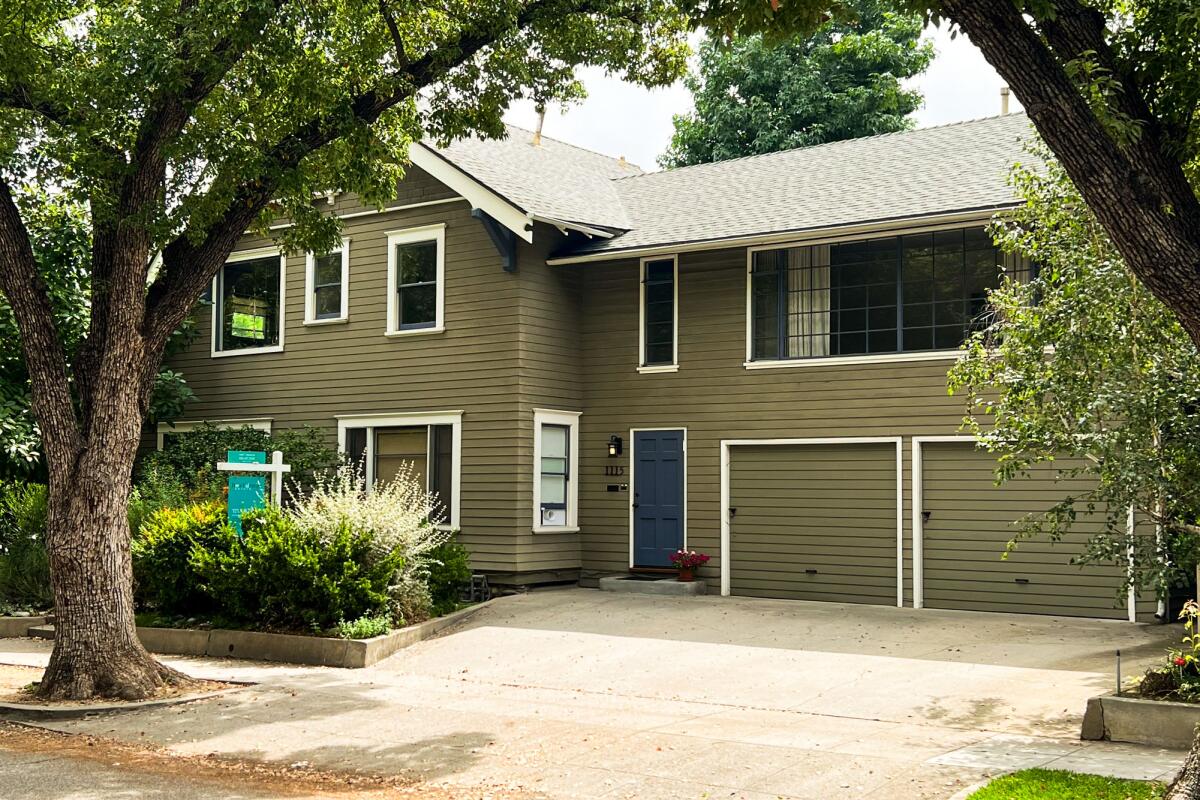
Although most of the mayhem in “Halloween” takes place at other locations, it’s included here because, on a recent drive-by, I noticed a for-sale sign in the front yard. According to the official listing at Exp Realty (which, as of this writing, lists a sale as pending), the home has been in the same family since the 1930s, which makes this the first time in generations the home (actually three homes — it’s described as a a three-unit property) has been on the market.
Here’s hoping the new owners carry on the Halloween tradition of the previous ones, who were known to stock the porch with prop pumpkins and a nice note each season, encouraging visitors to reenact the scene where Laurie Strode sat atop a concrete pillar clutching her bags and a pumpkin at the corner of Fairview Avenue and Oxley Street waiting for Annie to pick her up for an ill-fated babysitting gig.
Spookiness factor: Near non-existent — unless you’re afraid of lurking libraries.
"Halloween" (hedge)
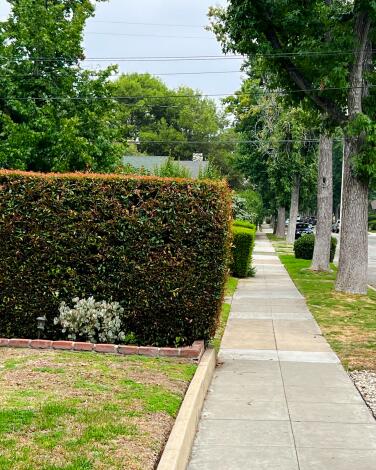
Spookiness factor: Off the charts. When I drove over to see this fearsome fauna for myself, I found myself weak in the knees as I walked toward it. If someone had stepped out from behind it — mask or no mask — I probably would have soiled myself on the spot.
"A Nightmare on Elm Street"
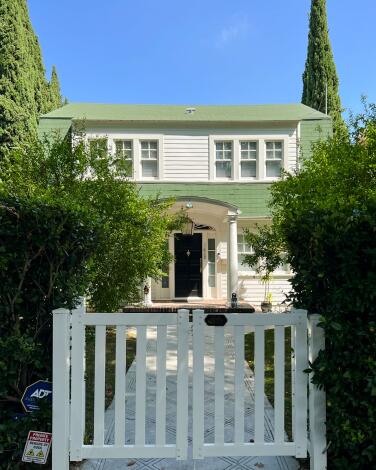
The actual house façade that appears onscreen (and shares the same street number — 1428) will still be recognizable to fans of the film — right down to the green shingles — who will find it just five fingers, er, houses south of Sunset Boulevard. The house made headlines in 2021 when it went on the market (bids were due on Halloween) and again early the next year when it sold for just shy of $3 million. (If you’re in the neighborhood, why not head just north of Sunset and do a drive-by of 1537 and 1530 N. Orange Grove Ave. — where Annie Brackett (Nancy Loomis) and Laurie Strode (Jamie Lee Curtis), respectively, were babysitting when things got super stabby in the first “Halloween” flick.)
Spookiness factor: Spooky? In your dreams, maybe.
"Poltergeist"
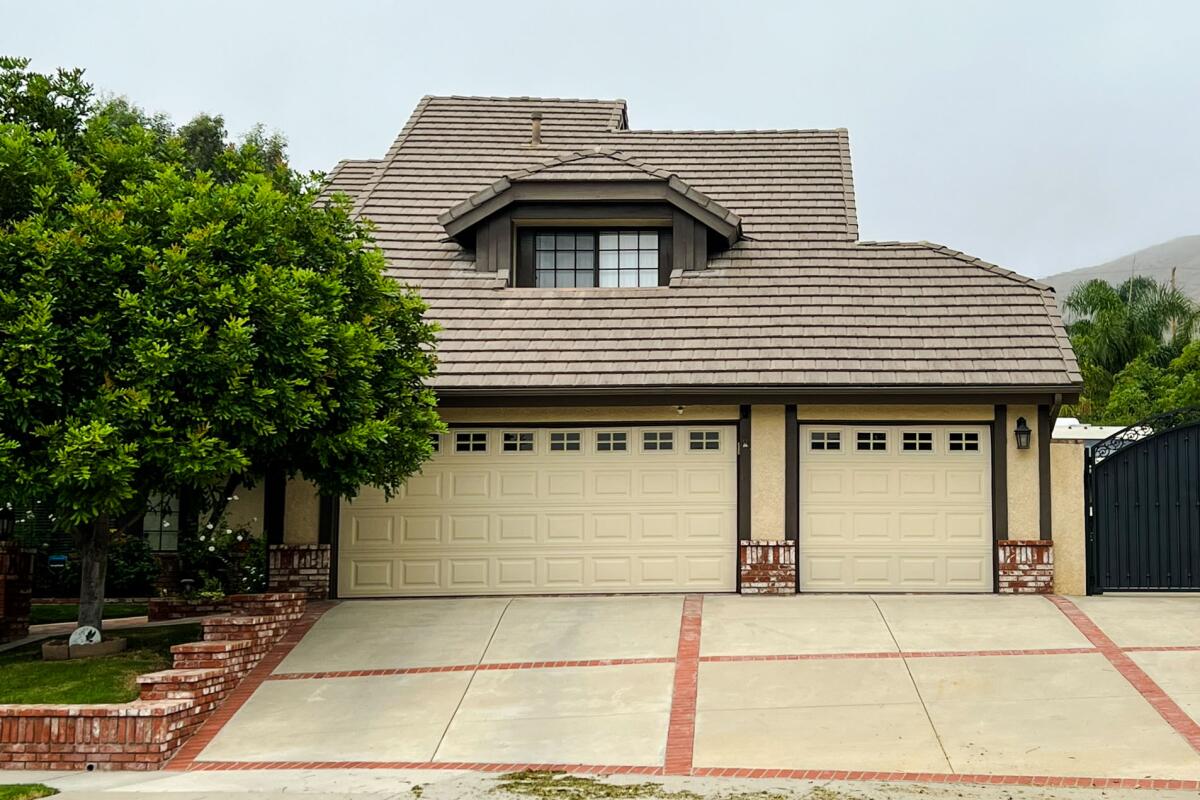
The house, it turns out, is a very big part of the problem — and as such feels like a character of its own. The tree outside the window is capable of devouring a child, the closets are danger zones and even the TV static is menacing. Standing in for part of the fictional planned-community-built-on-a-cemetery called Cuesta Verde is a quiet neighborhood in Simi Valley, and unlike the house in the film, the one used in exterior shots still stands.
Spookiness factor: Even in broad daylight, this idyllic-looking suburban home is likely to give fans of the film seriously sinister vibes — no creepy clown dolls or evil trees required.
"Psycho"
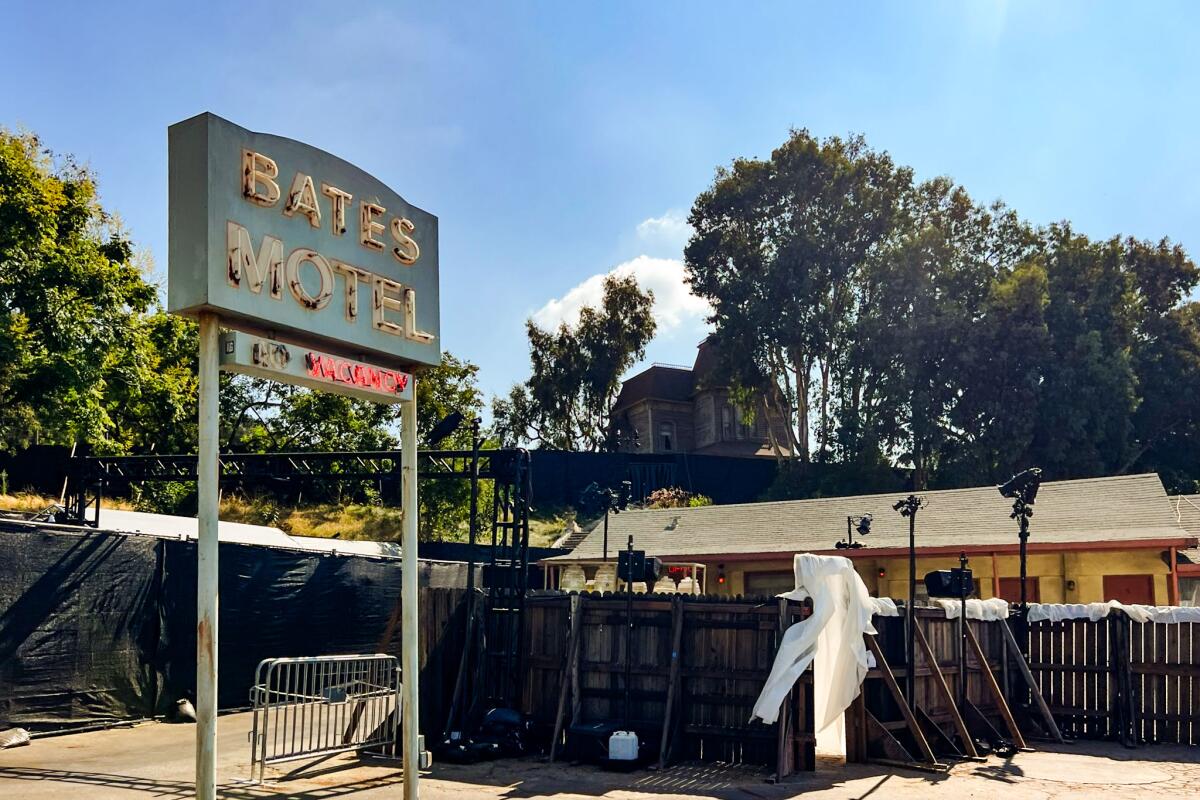
If you do all that, though, about 38 minutes in, you’ll roll by the weathered, vaguely Victorian-style manse. (Pro tip: For the least obstructed view, snag a seat on the left-most side of any given row on the tram.)
Spookiness factor: If you’ve seen the movie, expect to feel a serious sense of foreboding as the tram turns onto Janet Leigh Drive, lumbers past the Bates Motel (where Leigh’s character checked in and never checked out) and gives you your first glimpse of the house on the hill in the distance. If you’ve somehow not managed to see the movie, expect to be bewildered — and hopefully a little afraid — at what greets you on the front porch as you roll past.
"Thriller"
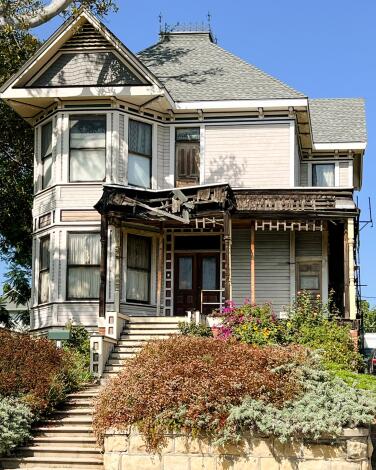
One of those tropes — about the bad things that can happen when one flees into an abandoned house — brings Jackson’s movie date (and eventually zombified Jackson and a horde of zombies) to a run-down Victorian manse. On-screen, it can be found at about the 10:34 mark. Off-screen, it can be found in the same stretch of Echo Park as — and just two doors down from — the original “Charmed” house.
Spookiness factor: The scariest thing about this house is the part of the porch roof hanging precariously over the front steps appearing ready to fall in a strong breeze.
“What We Do in the Shadows”
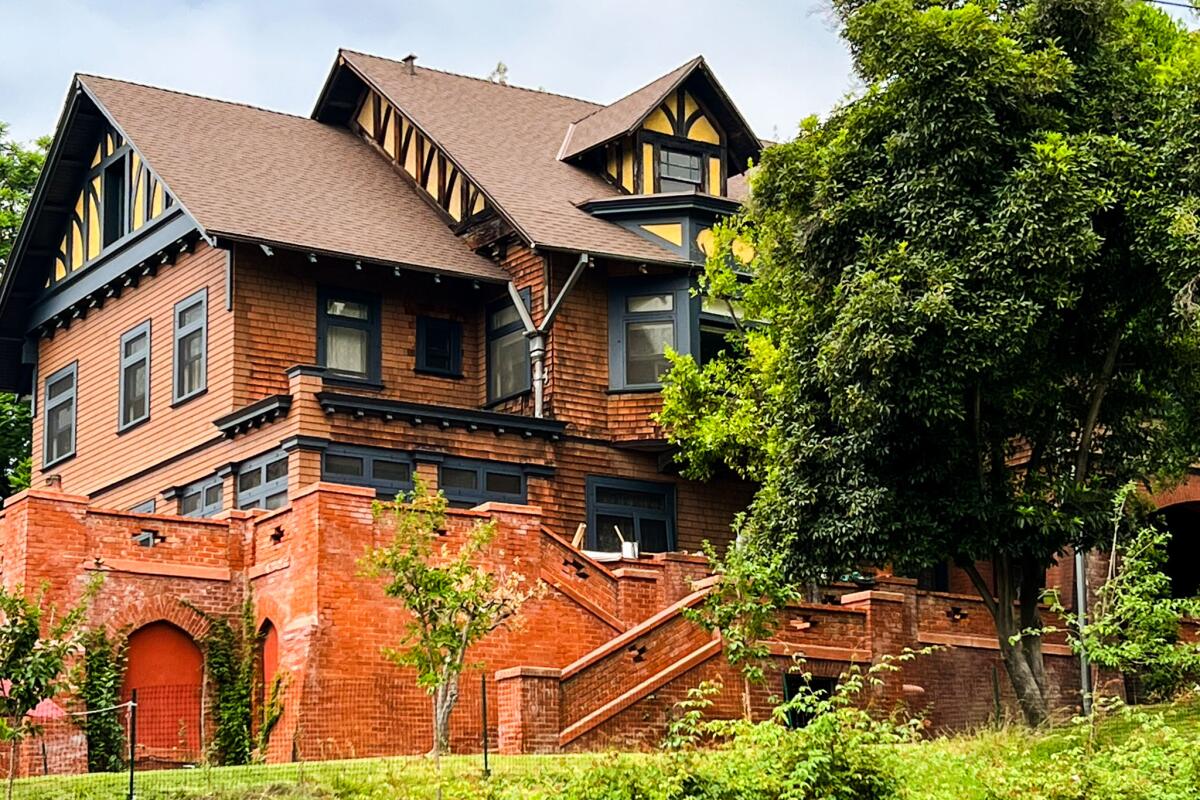
Even so, there’s a very tangible — and visible — connection to Southern California. That’s because the exterior establishing shots of the vampire manse that appear in nearly every episode are of the historic Childs-Torrance House, a three-story Tudor Revival home in the Buena Vista Historic District of South Pasadena. I could prattle on about the extensive history of the home, but that’s stepping into energy-vampire territory.
Spookiness factor: About as scary as the show itself, which is to say not at all.
"The Witches of Eastwick"
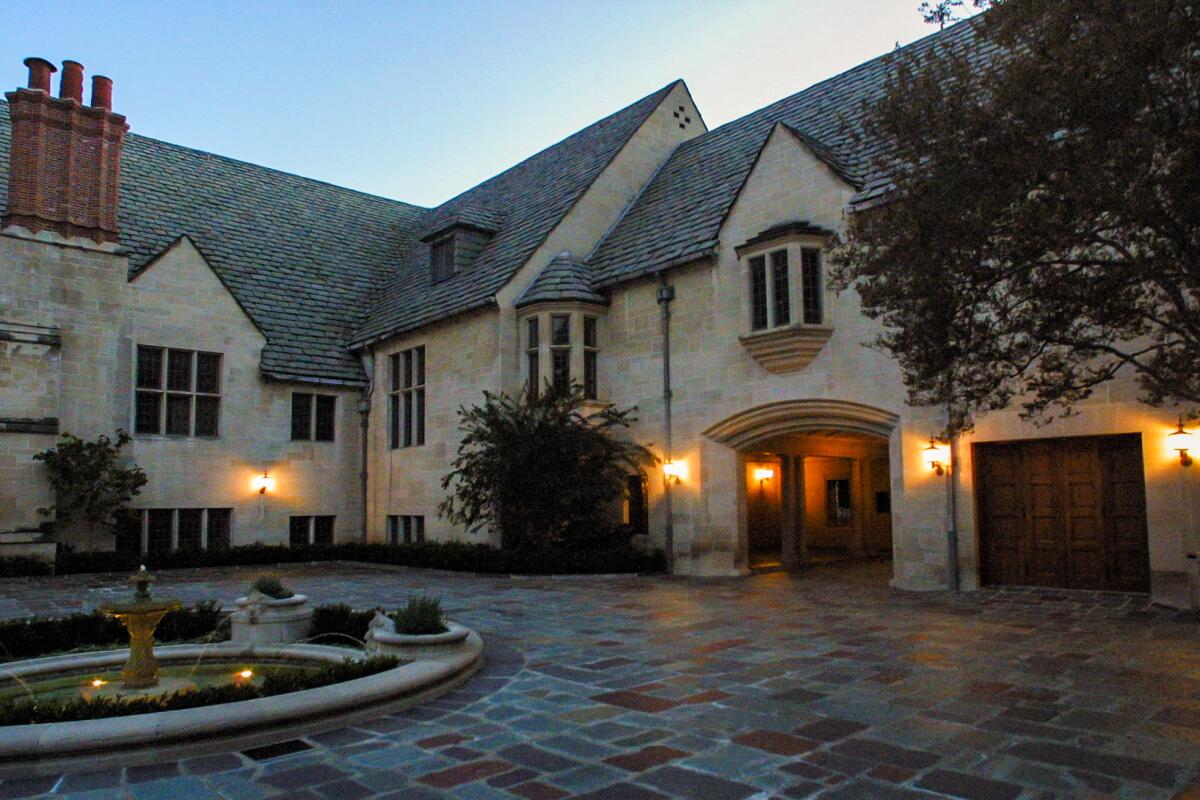
The 55-room estate also has some offscreen horror in its history, specifically the 1929 deaths of oil heir and homeowner Ned Doheny and his secretary, Hugh Plunkett. (The official story is Plunkett shot his boss and then turned the gun on himself, although 94 years later there’s still some mystery swirling about.) The grounds are open to the public daily from 10 a.m. to 6 p.m. Tickets are $8 for residents of Beverly Hills ($10 for nonresidents) for self-guided tours of the first floor and theater (offered on the first weekend of each month) and must be purchased in advance.
Spookiness factor: For the horror-themed movies filmed there, no spookiness at all. But when it comes to IRL municipal park murder scenes, this place is probably as creepy as you’ll find.

